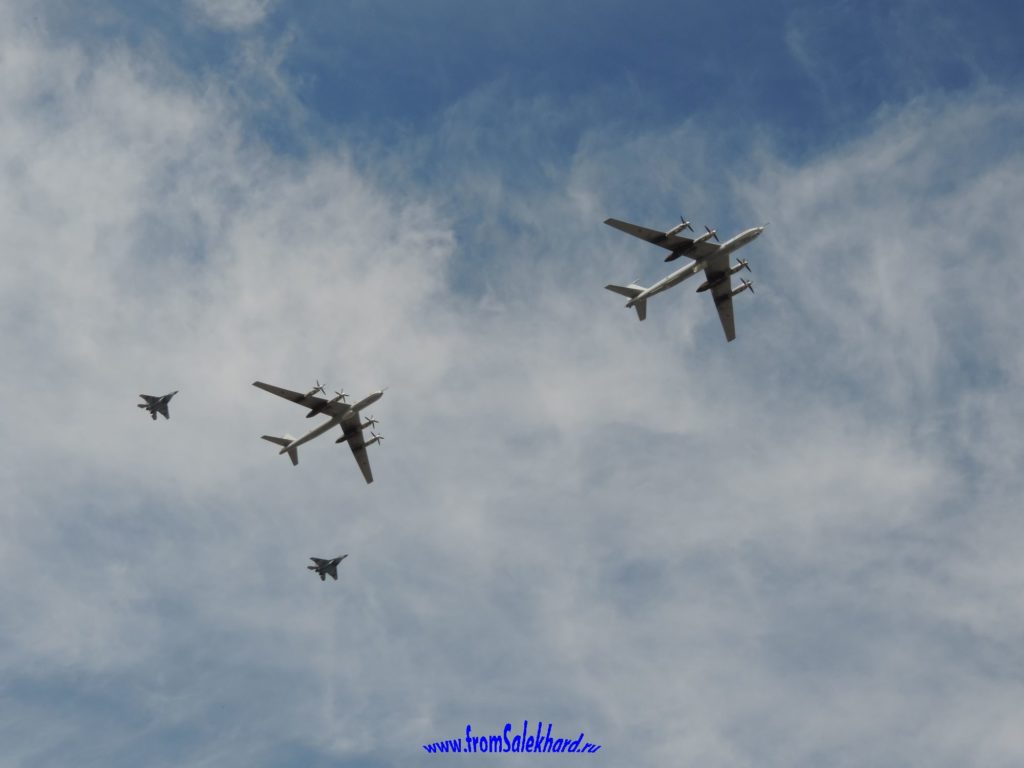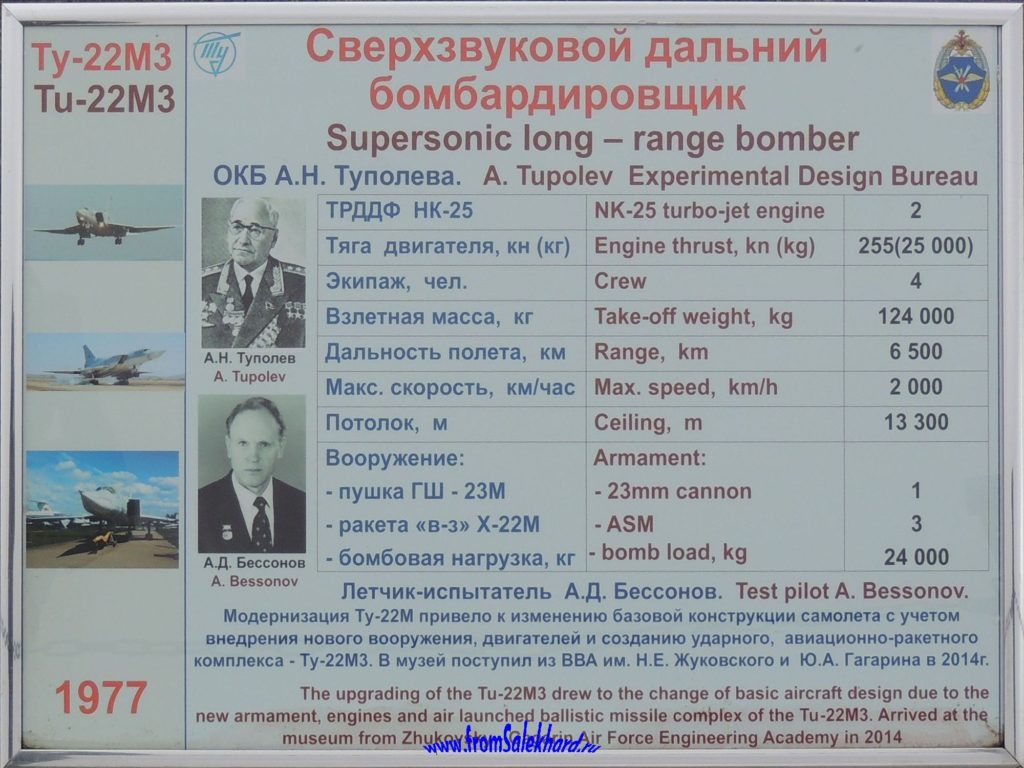Central Museum of the Russian Air Force. Bombers.
By fromSalekhard in My museums
I don’t know how it will go further, but I will continue with the bombers. Firstly, these are really huge things that immediately catch your eye. Secondly, these are beautiful things. And thirdly, the planes in this particular museum are quite unique and many have their own legends.
Main publication: Central Museum of the Russian Air Force. Introduction.
Previous publication: Central Museum of the Russian Air Force. Soviet American.
Among propeller-driven vehicles, one cannot fail to mention the Tu-95. As a matter of fact, you won’t be able to pass by him: over there he spread his wings for fifty meters.
Tu-95 bears the title of the fastest propeller-driven aircraft. He’s also the loudest. Yes, in the overall ranking, first place goes to the American Republic XF-84H,
but it was an experimental aircraft, and the Tu-95 was a serial one.
When a couple of Tu-95s flew by at the Navy parade in St. Petersburg, alarms went off on all cars along the route.
They were bringing up the rear and a whole bunch of planes had already flown in front of them. But the car alarms greeted only them.
There are two such aircraft in the museum. One stands in the center, you can’t get close to it, and it doesn’t have a sign.
For most of its museum life, it was known as the Tu-95N (Carrier): a strike system consisting of a carrier aircraft and a supersonic RS (Record of Speed) bomber, which was a single-seat aircraft 27.5 m long. The RS was supposed to reach a speed of 3000 km/h and carry one nuclear bomb with a yield of 30 kilotons to a range of 13000 km.
Thanks to the volunteers, it was possible to establish that this is in fact the second copy of the Tu-95-2 aircraft – the progenitor of the entire line. At the end of its activity, it was used as a flying laboratory (летающая лаборатория), i.e. Tu-95LL.
Next came jet aviation. And it began with our first front-line jet bomber Il-28,
equipped with a copy of the English Rolls-Royce Nene turbojet engine with a centrifugal compressor. (Here’s where we also suffered with the conversion from the inch to the metric system).
Let’s return to strategic aviation and Tupolev aircraft, namely the Tu-16
The museum does not disclose this, but there is information that this is the first copy of the reconnaissance modification.
There are again two such aircraft in the museum. The second is the Tu-16K missile carrier, which is not difficult to guess from the KSR-5 missiles suspended.
In history and in this museum, the Tu-16 is followed by the Tu-22.
The plane attracts attention with its unusual engine arrangement. And this, as I understand it, was one of the reasons for its modernization. The initiative in this came from Tupolev himself, and here, once again, his non-design talent was revealed. Because what happened as a result is not a modernization at all, but a completely different aircraft.
This can be seen with the naked eye, plus I had to read that only the front landing gear and the bomb bay flap remained unchanged from the original model.
With true modernization, much remains in place. At a minimum, general outlines and familiar appearance. That’s how it is with this modification, indeed.
There are two Myasishchev Design Bureau aircraft on the site. One of them, like the previous Tu-22M3, is not very accessible for viewing.
The only saving grace is that this is a very close relative of the M-4 aircraft installed in Verkhnyaya Pyshma, where it is more accessible for inspection.
But the second plane is exactly what the word “rocket plane” represents for me, no matter what it actually means. This is the plane from those futuristic pictures in a popular science magazine that I looked at with lust in my school childhood.
If we add to this that there is a couple standing next to each other from whom it is impossible to take your eyes off,
then it becomes clear that I spent a lot of time there.
Yes, the plane completed only 10 flights and did not reach the stated speed of Mach 3. Yes, its further development was stopped in favor of the Tu-160 (it is quite possible that it was not Tupolev’s design talent that played a role here). Yes, it is called the “Russian Valkyrie”, and it is indeed extremely similar to the American XB-70 Valkyrie. But how the tarnish from welding on its titanium planes shimmers in the sun!
And, completely off topic, but there’s nowhere else to put it.
Well, this is a fighter, but with a take-off weight twice that of the Il-28 bomber!
Tags: Moscow

























































